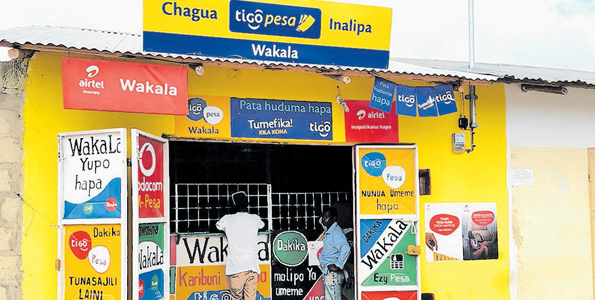Customers at a mobile money transfer services outlet. PHOTO | FILE Findings from FinScope Tanzania indicate that one of the main drivers of access to financial services in Tanzania has been the take-up of digital financial services which require mobile phone ownership, a registered mobile money wallet or access through a third-party.
Dar es Salaam. Financial services access point within a five kilometer radius in rural Tanzania has improved by 12 to 78 per cent in 2017 from 66 recorded in 2014, the Finscope Tanzania 2017 report has said.
Findings from FinScope Tanzania indicate that one of the main drivers of access to financial services in Tanzania has been the take-up of digital financial services which require mobile phone ownership, a registered mobile money wallet or access through a third-party.
FinScope Tanzania presents a comprehensive understanding of the financial services landscape across the country, a measure for demand and usage of financial services by population segments and insights into the barriers to financial inclusion.
A key factor in phone ownership is living in an area with network reception. Mobile phones were used during data collection to assess network reception in all the enumeration areas visited. 95 per cent of the East Africans were found to have network reception.
The majority of financial service providers found within a 5km radius were mobile money agents.
Six out of ten mobile money agents provide services for multiple providers. It is also worth noting that almost two thirds of the mapped bank agents are also mobile money agents, which is another indication that the financial sector is deepening rather than widening.
Nine out of ten respondents said they have access to a mobile phone, while 80 per cent live in households with a mobile phone.
“Given the difficulty of accessing mobile financial services through a phone owned by someone else, respondents were asked if they themselves owned a phone,” says a report. According to the report, six out of ten adult Tanzanians own a phone, while four in ten have a SIM card which they insert in other peoples’ phones.Groups which are less likely to own a phone or a SIM […]
